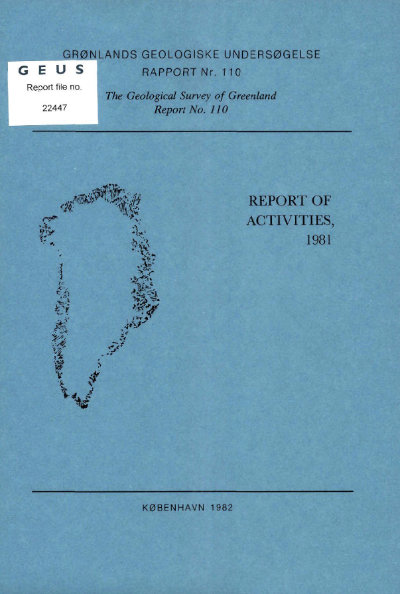Mapping of Archaean rocks in part of the Ivisârtoq sheet
DOI:
https://doi.org/10.34194/rapggu.v110.7799Abstract
Parts of Kangiussap nunâ were mapped in the 1981 field season at a scale of 1:20000 as the start of the Ivisârtoq project (Chadwick & Crewe, this report). This area was surveyed on reconnaissance scale in 1975 and brief accounts were published (Walton, 1976; Allaart et al., 1977). These accounts proved to be of value in predicting the type of geology to be expected, but in the course of the mapping contradictions were revealed and some of the speculative views expressed were found to be unacceptable. Problems centre on establishing satisfactory criteria for slotting all granitic types into established divisions. It is hazardous not only to attempt this without isotope geochemistry, but also to correlate units across the whole area. The reasons for this are three-fold: the deformation was probably not uniform; coeval units are mineralogicaIly not uniform; established field criteria for recognition of Amitsoq gneisses (presence of Ameralik dykes) are irregularly developed or not preserved. Thus whilst a sequence of events can be established in any sub-area, it is not often possibie to assign a gneiss body to one of the major groups (Amitsoq or Nuk), and because of the irregular deformation it is not always possibie to distinguish between Nuk gneisses and rocks of Qórqut affinity. It does not follow from this, as suggested by Walton (1976), that the Qórqut granite started to develop in Nûk times.
Downloads
Published
Issue
Section
License
This article is distributed under a CC-BY 4.0 licence, permitting free redistribution and reproduction for any purpose, even commercial, provided proper citation of the original work. Author(s) retain copyright over the article contents.


